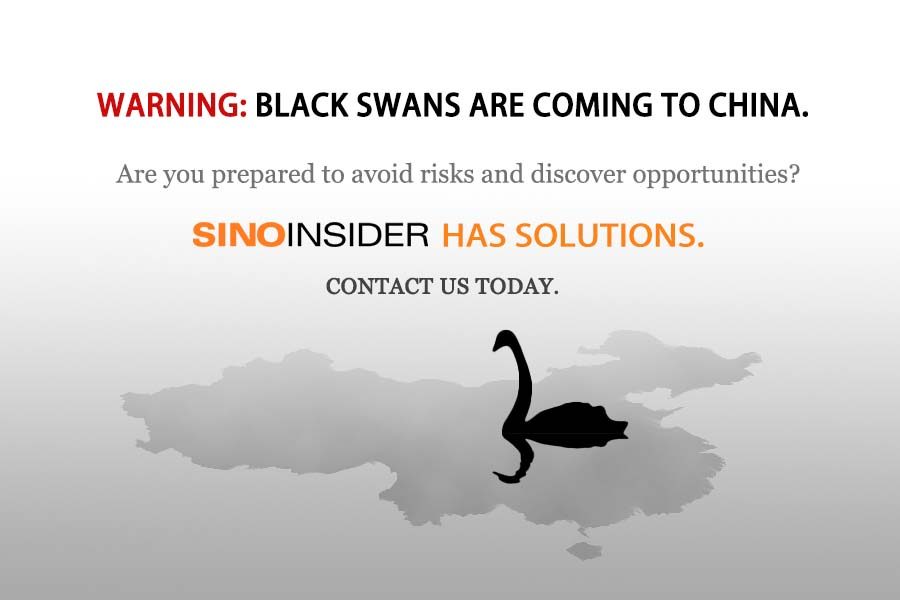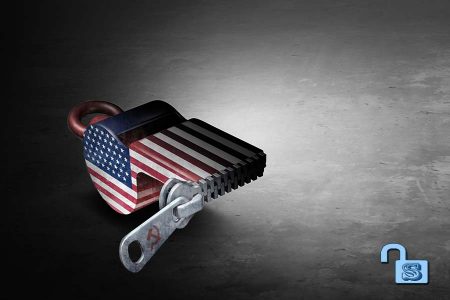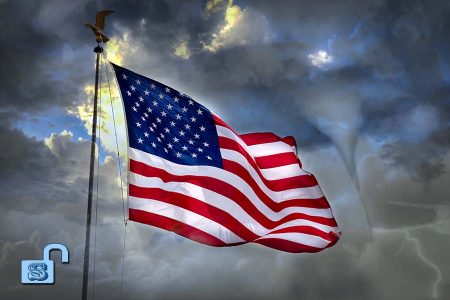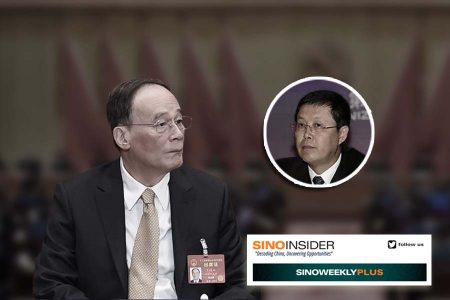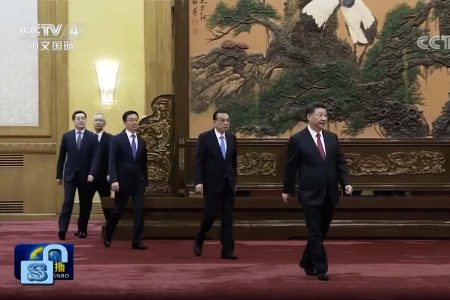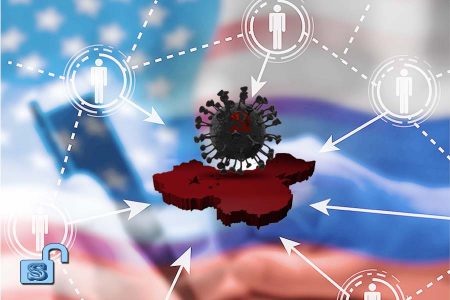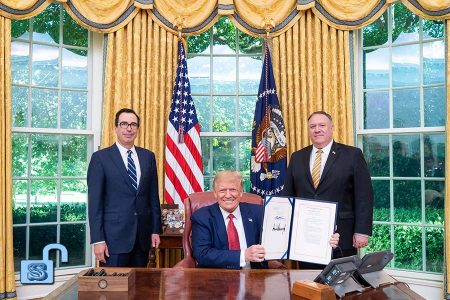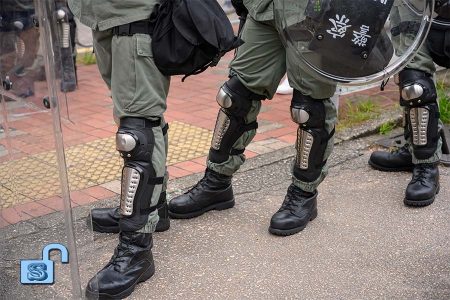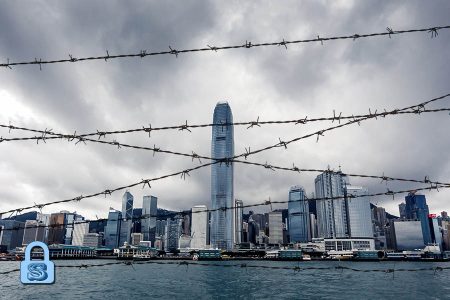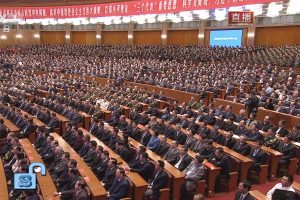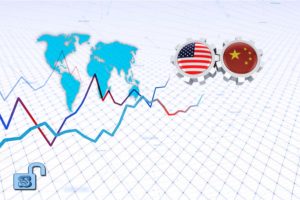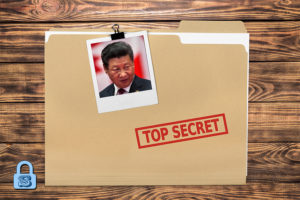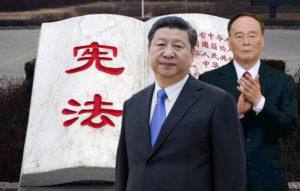◎ Critics say that the Trump administration has no China strategy. An appraisal of the Trump administration’s China moves since 2017 reveals the exact opposite.
In recent weeks, the White House has emphasized the end of America’s long-time engagement policy with China, with senior Trump administration officials delivering hard-hitting speeches targeting the Chinese Communist Party and its authoritarian ideology. The U.S. military has drawn red lines on Beijing’s claims in the South China Sea, and authorities are cracking down on Chinese researchers in the U.S. affiliated with the People’s Liberation Army.
On July 21, the U.S. ordered the People’s Republic of China to close its Houston consulate, citing allegations of its role in furthering the CCP’s broader espionage efforts in the United States. The move came days after reports that the Trump administration is considering blanket restrictions on CCP members from entering the U.S.
The Trump administration’s tough words and actions against the CCP regime have observers declaring a “new cold war” between the United States and China. “Future historians will probably focus on 2020 as the point when intensifying strategic competition between the United States and China turned into a new cold war,” Reuters columnist John Kemp wrote in a July 22 piece.
Critics have slammed the Trump administration for being unstrategic, or worse, having no strategy save attacking China for the sake of winning re-election. “President Trump is pursuing a reckless, incoherent and unilateral offensive against Beijing that appears designed to boost his reelection campaign, not manage the complicated challenge posed by the regime of Xi Jinping,” writes the editorial board of The Washington Post.
A careful appraisal of the Trump administration’s China strategy since 2017 reveals the exact opposite of what Trump’s critics say. The Trump administration has a clear and coherent strategic approach to the PRC, but has to be flexible with tactics to realize strategic goals due to economic realities and the complexity of the CCP challenge. The coronavirus altered previous economic conditions and made it more conducive for the administration to take a harder stance against the CCP. Finally, the Trump administration’s tough actions and rhetoric against the CCP since May 2020 appear to be less re-election boosters than genuine efforts to hold the CCP accountable for taking advantage of the COVID-19 pandemic to further its domination agenda and for breaking its international commitment on Hong Kong.
Strategy meets reality
Arguments that the Trump administration lacks a China strategy tend to ignore the existence of administration documents articulating said strategy. The administration’s approach to the PRC is outlined in the 2017 National Security Strategy and expanded upon in the U.S. Strategic Approach to the People’s Republic of China (henceforth referred to as the “2020 USSAPRC”) released on May 20, 2020. The documents lay out unambiguously why the PRC is a long-term “strategic competitor” to the U.S., state that America’s strategic approach to the PRC will be guided by “principled realism,” and note that U.S. policies are designed to protect American interests and compel the CCP to cease its malign behavior and adhere to responsible state behavior. The 2020 USSAPRC states that America’s “competitive approach” to the PRC has the objectives of improving the resiliency of U.S. “institutions, alliances, and partnerships” to “to prevail against the challenges the PRC presents,” as well as “compel Beijing to cease or reduce actions harmful to the United States’ vital, national interests and those of our allies and partners.” The 2020 USSAPRC states on numerous occasions that America will work with allies, partner nations, and international organizations on the CCP threat. The Trump administration’s major China policies, including the trade war, sanctioning of state-backed Chinese telecommunications companies and PRC officials, and suspending of Hong Kong’s special exemptions over the CCP’s national security law, are all consistent with the strategic approach laid out in the 2017 NSS and the 2020 USSAPRC.
Arguments that the Trump administration lacks a coherent PRC strategy because President Trump has been “vacillating wildly” on China conveniently overlook the complexities of confronting the CCP while preserving America’s interests and national security. During the Cold War, the U.S. was able to get tough on the Soviet Union almost immediately after the communist regime made its global ambitions clear as the U.S. and Soviet economies were not closely intertwined. The Trump administration, however, could not afford to get overly confrontational with the CCP too rapidly because four decades of engagement policy had deeply integrated the U.S. and PRC economies. Entering cold war hostilities before a degree of decoupling and domestic preparation could seriously hurt America’s economic security and interests, as well as those of its allies and partner nations. The world economy would also be negatively impacted by a “new cold war” initiated prematurely, which in turn would harm U.S. interests. Meanwhile, the CCP’s elite capture of American businesses and politicians, as well as elites in other countries and international organizations, meant that any form of decoupling between the U.S. and China would be fraught with difficulties. Regardless of complications, the Trump doctrine of principled realism meant that the Trump administration had to confront the CCP, even if confrontation was constrained by significant political, economic, financial, and geopolitical risks. The Trump administration also needed to ready America and the American people, as well as allies and partner nations, for long-term, and definitely not pain-free, strategic competition with the PRC.
Before the coronavirus, the Trump administration dealt with the CCP challenge through implementing tough policies consistent with its strategic approach to the PRC with tactical flexibility. This is best observed through Trump’s tech war and trade war. The idea behind Trump’s trade deal with China was not merely to boost purchases as critics claim, but to compel the CCP regime to abandon its malign behavior like intellectual property theft and make structural changes that would genuinely liberalize China’s economy. Getting the CCP to take trade negotiations seriously required slapping punishing tariffs on Chinese exports to bring the CCP to the table. To seal the deal, however, the Trump administration had to endure delaying tactics from the CCP (dragging out negotiations, reneging on a draft deal, etc.) and reach a partial compromise by agreeing to a “phased in” approach to the trade agreement. President Trump also showed tactical flexibility to keep the CCP invested in trade negotiations that would ultimately hurt the regime’s interests (if duly implemented) while protecting American interests by demonstrating personal rapport with Xi Jinping while (correctly) blaming previous U.S. administrations for allowing the CCP to take advantage of the United States. Meanwhile, the Trump administration seized the opportunity of the trade talks to educate the American public on the CCP’s egregious behavior on trade, theft, and espionage, as well as prepare a “whole-of-government” approach to the CCP challenge. The administration also gradually stepped up efforts to call out the CCP’s military buildup and expansionism, propaganda and influence campaigns, pressure on Taiwan, Hong Kong, and nations in the South China Sea, and gross human rights abuses amid the backdrop of trade negotiations. Critics who accuse President Trump of simply wanting China to buy more American soybeans and buttering up Xi Jinping must also explain why he did not settle for a large purchase deal with China early on instead of persisting with tough negotiations with the PRC and insisting that pressing issues like intellectual property theft must be addressed. Critics must also have answers for why the administration had been steadily ramping up pressure against the CCP across the board while tough negotiations were ongoing.
The Trump administration also demonstrated adherence to principled realism and its overall China strategy by progressively tightening the noose on Chinese telecommunications entities like Huawei and ZTE. The U.S. ban on ZTE, which was replaced with a form of “probation” after President Trump showed goodwill to the company following a plea by Xi, served to put the CCP on notice for its malign behavior, allow trade negotiations beneficial to U.S. interests to continue, buy the Trump administration more time to prepare for strategic competition against the PRC, and educate the American public and the world on the dangers of using PRC state-backed telecom equipment. After the CCP backtracked on a draft trade deal in early May, President Trump banned Huawei from buying components and parts from American companies, and banned U.S. companies from working with and buying telecommunications equipment from companies deemed a national security risk like Huawei and ZTE. The U.S. ban on Huawei has proven very effective in swaying allies, partner nations, and major telecom companies around the world against working with Huawei to build their 5G networks and opting for non-PRC companies like Nokia and Ericsson instead.
Critics are not incorrect in observing that the Trump administration had launched a “unilateral offensive” against the PRC. However, this criticism is unjustified in considering that America’s allies, partner nations, small countries, and even international organizations are disincentivized from working with the U.S. against the CCP due to the PRC’s economic leverage over them and elite capture. The seriousness of the CCP’s influence over U.S. allies and other countries and the Trump administration’s concerns can be seen in Secretary of State Mike Pompeo’s “Communist China and the Free World’s Future” speech. Pompeo said that America “can’t ignore” the CCP threat any longer, but while the U.S. “can’t face this challenge alone,” it was perhaps “time for a new grouping of like-minded nations, a new alliance of democracies.” Pompeo also cited the example of a NATO ally who “hasn’t stood up in the way that it needs to with respect to Hong Kong because they fear Beijing will restrict access to China’s market.”
Given the geopolitical realities of the day, the U.S. always had to take the initiative in standing up to the CCP and impose costs on other countries for taking the CCP’s side to be assured of their allegiances and commitment to facing the CCP challenge. “Working with allies” for its own sake is otherwise symbolism and pageantry. We analyzed in July 2019 that the “success of strong unilateral American action against the Chinese communist regime may have encouraged U.S. allies, partners, and other nations to increasingly stand up to the CCP and its bullying … international support for the U.S. will only grow if it holds a tough line against the Chinese communist regime.” Our analysis has been affirmed by the abandoning of Huawei by the United Kingdom, France, and major telecoms in the Indo-Pacific region as the U.S. stood firm in its decision to ban the company, as well as strong international criticism of the CCP over its ending of Hong Kong’s autonomy. Without the Trump administration’s strategic “unilateralism,” the world would likely be largely silent on Hong Kong, and countries everywhere would be adopting dangerous Huawei 5G products and bringing the CCP another step closer to achieving its global ambitions.
Coronavirus catalyst
Some critics argue that the Trump administration’s China strategy and tough actions against the CCP this year are the product of President Trump’s re-election considerations. Some others claim that Trump is using China to distract the American people from his handling of the coronavirus. While the coronavirus and re-election almost certainly factor into Trump’s thinking about China, the arguments of critics do not bear scrutiny given what the Trump administration has been doing on China since 2017 and the CCP’s persistence in acting in a malign fashion.
As we laid out in the previous section, the Trump administration has a clear strategic approach to China and has acted towards the PRC in a manner that is largely consistent with its strategy. Many of the Trump administration’s seemingly “harsh” and “sudden” China policies and actions today were only meted out after years of U.S. investigations and warnings to the CCP. For instance, the Trump administration began emphasizing fairness and reciprocity in the Sino-U.S. relationship (particularly on trade) since 2017. The following year, the United States Trade Representative Office issued a Section 301 investigation report that called out the CCP’s unfair trade practices and malign behavior like intellectual property theft and espionage. The CCP, however, evidently did not heed the Trump administration’s demand for fairness and reciprocity; FBI Director Christopher Wray noted in a July 7 speech that the Bureau opens a “new China-related counterintelligence case about every 10 hours” and nearly half of the almost 5,000 active FBI counterintelligence cases in America are linked with China. The CCP also did not show any willingness to reform; Secretary Pompeo said in his July 23 speech that Politburo member Yang Jiechi offered “plenty of words, but literally no offer to change any of the behaviors” during their meeting in Hawaii on June 17. The closure of the Houston consulate and reports that the Trump administration is considering restricting the travel of CCP members and their families to the U.S. must be viewed in context of prior U.S. warnings and investigations, as well as the CCP’s recalcitrance.
There is a case to be made that the Trump administration’s rapidly hardening stance towards the PRC is largely shaped by the new economic realities created by the coronavirus and the CCP’s behavior during the pandemic. The CCP revealed itself to be the malicious Marxist-Leninist organization that it is through its actions during the pandemic, including covering up the origins of the coronavirus (including “enlisting” the help of the CCP-friendly World Health Organization) and spreading disinformation (particularly blaming America for the coronavirus); taking advantage of the pandemic to push for global hegemony through “mask diplomacy”; and menacing its neighbors through military maneuvers in the South China Sea, the East China Sea, and on the Sino-Indian border. While not directly connected to the pandemic, the CCP also took the opportunity to pass a national security law over Hong Kong that effectively terminated the “one country, two systems” arrangement and repudiated the Sino-British Joint Declaration that the CCP agreed to in 1984. The CCP’s erosion of freedoms in Hong Kong and subversion of the rules-based order during the pandemic threaten American interests, and the Trump administration had to respond to remain consistent with its doctrine of principled realism. The new economic realities caused by the coronavirus gave the Trump administration more room to get tougher on China—quarantines and lockdowns meant lower demand for Chinese goods in the U.S., leading to a quasi “decoupling” effect; American companies started producing personal protective equipment domestically; the Trump administration could no longer count on the Sino-U.S. “phase one” trade deal to effectively compel behavioral change from the CCP because the latter will unlikely be able to fulfill its purchase commitments due to the coronavirus and it would be unrealistic for the administration to demand that the CCP do so; and the U.S. and global economies, already ravaged by the coronavirus, would not be impacted too much further by an escalated “new cold war.”
In sum, the CCP’s behavior during the pandemic compelled the Trump administration to respond with strong measures, while the coronavirus created economic conditions that allowed the administration to get tougher on the CCP with lower economic risks and costs to the United States. Also, the Trump administration’s actions against the CCP today have roots in earlier and numerous warnings and investigations; arguments that actions like closing the PRC’s Houston consulate serve merely to boost President Trump’s re-election campaign are only valid if those who make the arguments can demonstrate that those actions are entirely snap decisions made independently of the Trump administration’s own China strategy and prior actions.
The effectiveness of Trump’s China strategy
Critics of the Trump administration’s China strategy and specific actions often argue that they are ineffective, or even pointless and self-defeating. On the contrary, we find that the administration has produced tangible results with its China strategy, as well as intangible, but no less effective, pressure points.
The Trump administration’s trade war arguably affected the PRC more than the United States. While U.S. GDP did not hit President Trump’s target of 3 percent during the trade war years (2018: 2.9 percent; 2019: 2.3 percent), unemployment figures in 2019 hit a record 50-year low while economic data suggests that the impact of tariffs on America was limited. Also, the U.S. trade deficit with China fell 17.6 percent to $345.6 billion in 2019, indicating that the trade war was having an effect. Meanwhile, the CCP’s own unreliable economic data point to growing economic weakness as a result of the trade war. China’s GDP in 2019, the first full year of the trade war, fell 0.64 percent from a year ago to 6.1 percent (whether China’s GDP is really growing at the 6 percent rate is questionable; Renmin University economics professor Xiang Songzuo said that a “very important institute” in the PRC estimated that China’s GDP growth for 2018 should be 1.67 percent or even negative as compared to the official figure of 6.5 percent). The reduction in Chinese exports to America also had a direct impact on manufacturing, with investments in the secondary sector falling by 31.5 percent year-on-year and private investments in fixed assets falling 21 percent, according to data from the PRC’s National Bureau of Statistics. Official PRC data also hint at stagflation: Producer prices for the industrial sector started falling in 2018 and continued dropping to negative figures in 2019. Concurrently, consumer prices rose steadily in 2019, reaching a 3 percent increase in September and 4.5 percent in December; food prices rose even more sharply to 17.4 percent in December 2019. Meanwhile, analysts estimated in 2018 that China’s real unemployment rate is over 22 percent, while the lower official GDP figure in 2019 hint at an even higher unemployment rate in 2019; analysts also estimate that 80 million people have been put out of work by the coronavirus in 2020, or over three times higher than the 26 million figure given by the authorities. High unemployment, rising consumer prices, and falling producer prices indicate that China is heading in the direction of stagflation.
The trade war also gave the CCP trouble on the propaganda front. Trump’s tariffs and the back-and-forth nature of negotiations saw the CCP bluster about the PRC’s economic prowess and achievements one moment before eating humble pie the next. As the CCP started losing control over the trade war narrative, it began to downplay its controversial “Made in China 2025” plan in official media, as well as the bombastic “Amazing China” (“厲害,我的國”) propaganda.
The Trump administration’s tech war has successfully blunted Huawei’s global 5G push and the CCP’s effort to achieve world hegemony through technology dominance. In particular, the administration’s Huawei ban appears to have been a decisive factor in swaying the U.K., a close U.S. ally and a member of the Five Eyes intelligence alliance, to ban Huawei from its 5G networks and phase out Huawei from its existing networks.
The Trump administration’s bold human rights moves, such as sanctioning senior CCP officials for persecuting Uyghur Muslims in Xinjiang and touching upon “sensitive” topics like Falun Gong, will almost certainly impact the vicious factional struggle in the CCP elite ranks. Xi Jinping and his factional rivals will be forced into a showdown should the U.S. move aggressively to hold the CCP and individual officials accountable for gross human rights violations because the regime’s persecution campaigns are linked with the political legacy of Party bosses and their supporters.
The Trump administration would be hitting the CCP’s Achilles Heel should it go ahead with a travel ban on CCP members. Reports of a proposed travel ban already challenge the CCP on the ideological, psychological, and political fronts—the Party elite will be displeased with Xi for potentially bringing more harm to their interests, while the rank-and-file Party members will be forced to reconsider their membership and support for the CCP as the Sino-U.S. “new cold war” escalates.
Finally, the Trump administration’s praiseworthy effort to draw a clear distinction between the Chinese people and the CCP denies the CCP crucial opportunities to turn propaganda to its advantage and poses a serious ideological, psychological, and existential threat to the Party. Already, the CCP is being forced to make the case that it alone represents the Chinese people, putting it on the defensive. As the CCP seeks to regain ground and go on the offensive, it will eventually be forced to focus less on condemning U.S. “ideological bias” towards the PRC and instead play up the “racism” card. The Trump administration needs novel solutions to neutralize the CCP’s charges of “racism” and build on its current momentum in the ideological battle against the CCP.
Conclusion
An objective examination of the Trump administration’s China strategy and actions since 2017 will conclude that the administration has been tough and strategic in confronting the CCP. Those who study the CCP’s actions, particularly during the coronavirus pandemic, will also conclude that the Trump administration’s recent China policies are direct responses to the Party’s malign behavior and less singular efforts to bolster President Trump’s re-election bid.
We believe that the Trump administration’s China strategy has thus far been effective in pushing back against the CCP challenge. There is, however, still room for improvement; Secretary Pompeo said in his July 23 remarks that the U.S. must “engage and empower the Chinese people,” but did not elaborate on how the Trump administration would proceed with the task. Finally, a wounded animal is most dangerous, and the Trump administration must be prepared for sharp, asymmetrical, and unconventional CCP retaliation.

